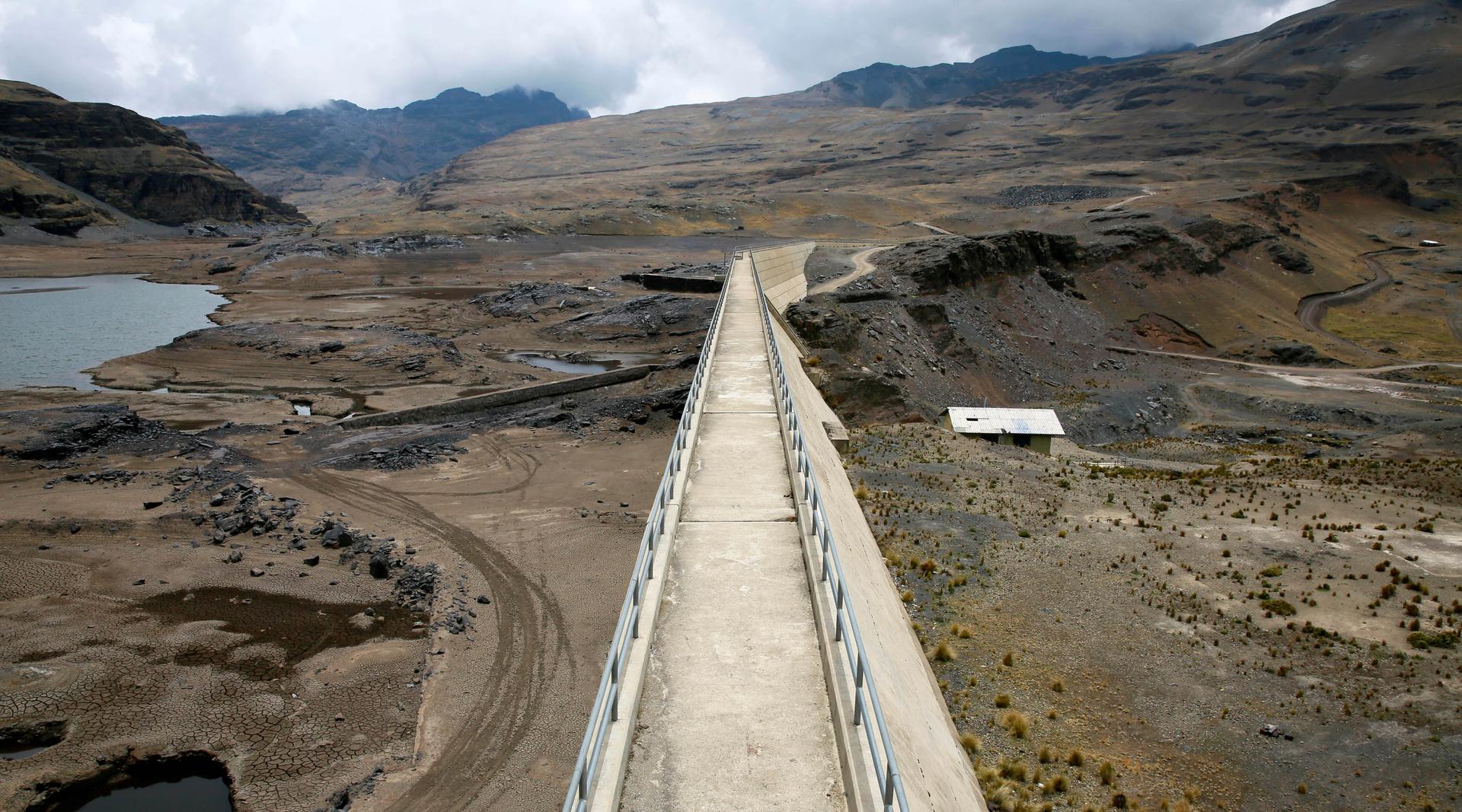With melting glaciers and mining, Bolivia’s water is running dangerously low
Bolivia’s dried-out Ajuan Khota dam, a reservoir affected by drought near La Paz, was photographed on Nov. 17.
The rugged Dakar Rally auto race is about to blaze through Bolivia. But to many Bolivians, the timing could not be worse.
Thousands of La Paz residents have been protesting these days. Now they’re also shouting online with the hashtag #AguaSíDakarNo — “yes to water, no to Dakar.” In other words, they wish authorities would pay more attention to a deepening water crisis.
Jan. 8 will mark two whole months of a water shortage in La Paz. Bolivia’s government says the country is suffering from its worst drought in 25 years. It’s gotten so bad that President Evo Morales declared a national state of emergency, tightened up water rationing, fired a top water official and drew up infrastructure projects to remediate the crisis.
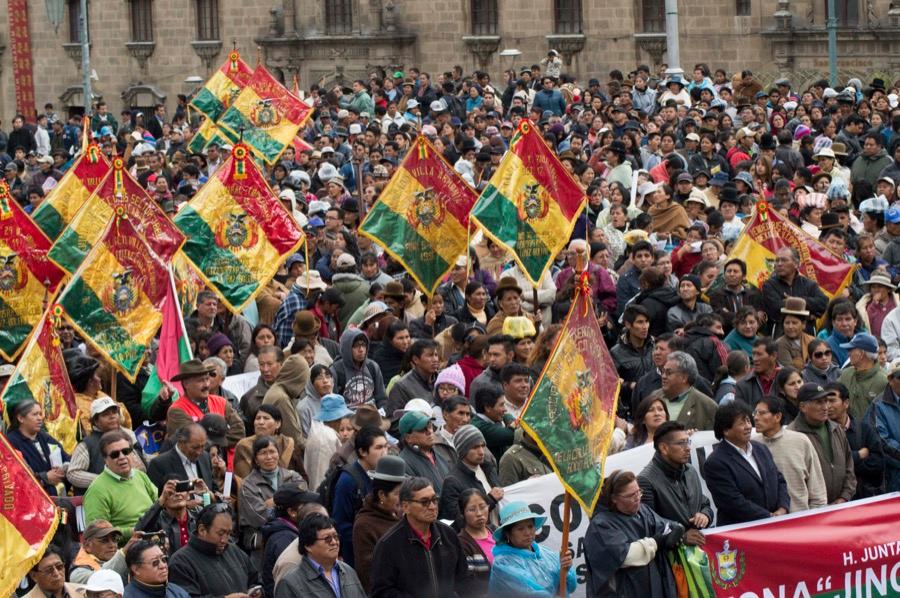
Some blame foreign mines near one of La Paz’s reservoirs for allegedly sucking up the supply. Some blame bad government planning. Others say this is climate change — including shrinking glaciers — bearing down on one of the world’s highest cities. The reality is possibly a combination of all three.
Problem is, droughts and water conflicts are not just affecting South America. They’re popping up anywhere from California to Syria to India — and, with populations growing and the climate changing, struggles over H2O are forecast to get a lot worse. Water is being called the new oil of the century, and some even predict international water wars to erupt over the next decades.
Fortunately for Bolivia, war has not broken out. But this current crisis in the Andes could be a bellwether for the Americas and beyond.
The government knows the glaciers are receding — by over 40 percent since 1985, according to one recent study. And it’s not just in Bolivia; Peru, Ecuador and Colombia are also losing ice cover. Bolivian cities get some of their water from glacial supplies, especially during dry months. Critics say the Bolivian government has failed to take measures to secure alternative water supplies.
Morales’ government, however, claims protesters are hyping up the water crisis to foment opposition to his 10-year rule.
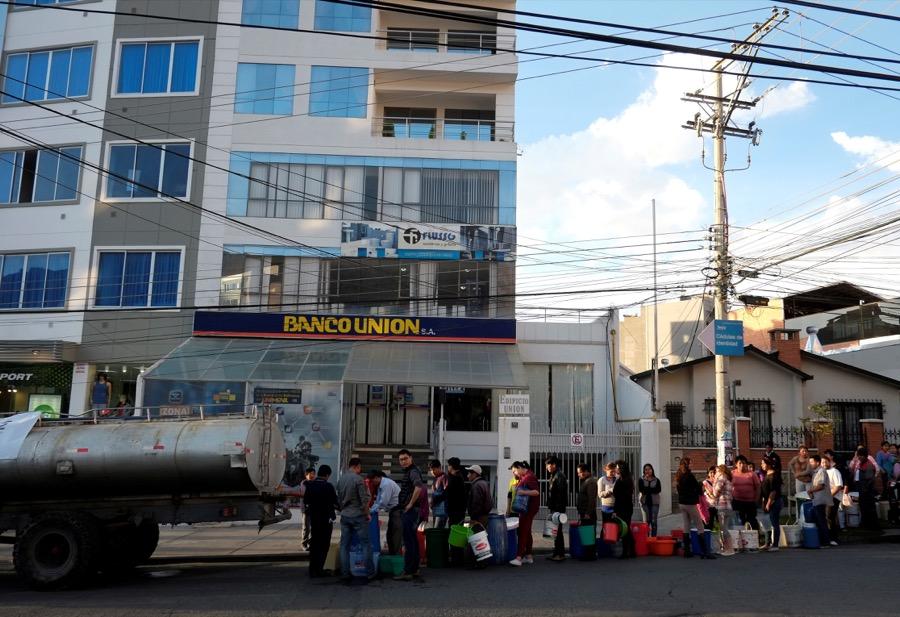
Dicey water delivery?
Rationing has hit more than 100 neighborhoods and affected about 400,000 people in La Paz and the neighboring city of El Alto.
Trucks bring water every three to four days for residents to fill just two containers at a time.
However, the La Paz Medical Association has advised that the water be filtered and treated with bleach before it’s consumed. That’s because of media reports that the same delivery trucks were previously used for carrying gasoline and diesel.
The head of a fuel company reportedly acknowledged his trucks were being used, but claimed the company followed rigorous cleaning protocols before filling them up with water.
Officials at Bolivia’s water and sanitation agency did not answer requests for comment.
Many in La Paz have no other option but to drink the allegedly tainted water. Not everyone can simply buy bottled water to meet their daily needs.
Yet the crisis is taking a toll on families, regardless of their income. Even the city’s more affluent south side is having rough times because of it — a rare case for Latin American elites.
A history of water woes
The resource-rich country is no stranger to water conflict. Back in 2000, a popular uprising took water management away from private hands after deadly clashes with government security forces in the city of Cochabamba.
Even though Cochabamba residents are now better prepared, by collecting rainwater, the city and other areas continue to face shortages.
Lake Poopó, once Bolivia's second-largest lake, dried out last year, as these NASA images show. Climate has taken part of the blame.
“This is a picture of the future of climate change,” German glaciologist Dirk Hoffman told The Associated Press at the start of 2016.
Authorities and environmentalists also point to another factor: Mining sped up the depletion of the Desaguadero River that fed the lake.
According to Paola Cortés, an environmental lawyer in La Paz, large-scale gold extraction swallowed and polluted the river since the 1980s without any oversight.
And in another city, Potosí, Cortés recalls a recent scandal where countless truckloads of the public’s water were being sold to mining firms, reportedly for about 1,000 to 2,000 bolivianos (US$145 to $290) each.
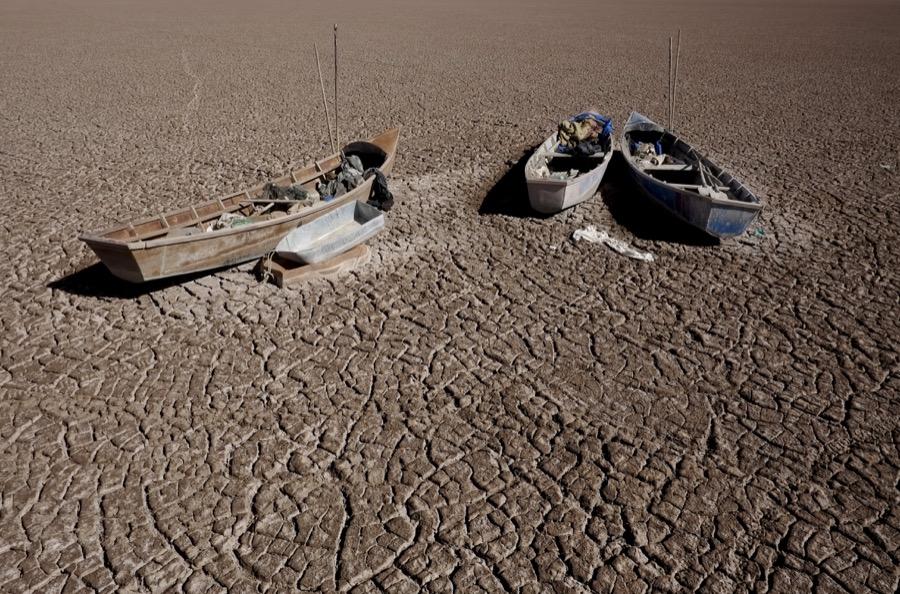
Spilling over borders
Making matters worse, Bolivia is waging a water war with Chile in the International Court of Justice.
In June, the Morales government sued Chile at The Hague for channeling water from Bolivia’s Silala spring. Chile argues the water flows naturally downhill to its territory. The Chilean state-owned mining company and many private mining firms have been using the water for years.
The case is expected to take months, if not years, to be resolved.
But in the meantime, water problems are affecting both countries.
Take Calama, a city in Chile’s Atacama Desert that’s home to many of the region’s copper miners. “Water is not for sale!” reads a local mural. But water polluted with arsenic from the mines flows out of local household faucets.
How about the Rio Grande?
About 4,000 miles north, Mexico and the US have some issues, too. Water-sharing agreements for resources reaching eight states as far up as Wyoming could see turmoil — particularly with the incoming administration of Donald Trump, as Politico reported.
Lori Kuczmanski, foreign affairs secretary at the International Boundary and Water Commission, which oversees the treaties, says she expects work to continue as usual despite administration changes.
"We are looking for ways to cooperate together in the case of a drought contingency," Kuczmanski says.
Still, Lake Mead, in Arizona and Nevada, has registered historic lows recently and the Rio Grande is frequently at risk of drought — which could all affect the supply for thousands.
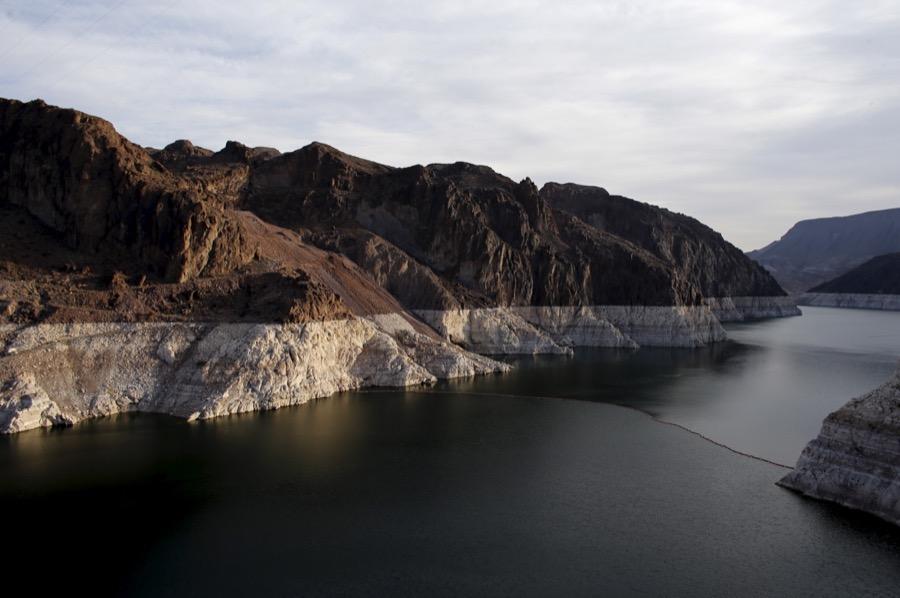
It all raises questions about how to better administer this crucial resource going forward. Residents want better government oversight. But plenty of countries rely on private management. Experts say the effectiveness of either model depends on water availability more than financial support.
Ryan Stoa at the Florida International University College of Law suggests local administration of water resources is a better route. Transferring authority to decentralized agencies specializing in water could improve small-scale management. Stoa calls it “subsidiarity”: making laws and regulating them at the lowest governance level “to promote efficiency and local ownership over policies and regulations.”
Meanwhile, observers say Bolivia needs improvement regulating, whether on the private- or public-sector side.
As for the Dakar Rally, its director Marc Coma has reportedly ordered six truckloads of water brought in for the competition.
“We decided to transport, from Argentina, our own water in enormous tanker trucks,” Coma said according to El Periódico newspaper, “so Bolivia won't have to worry about us.”
